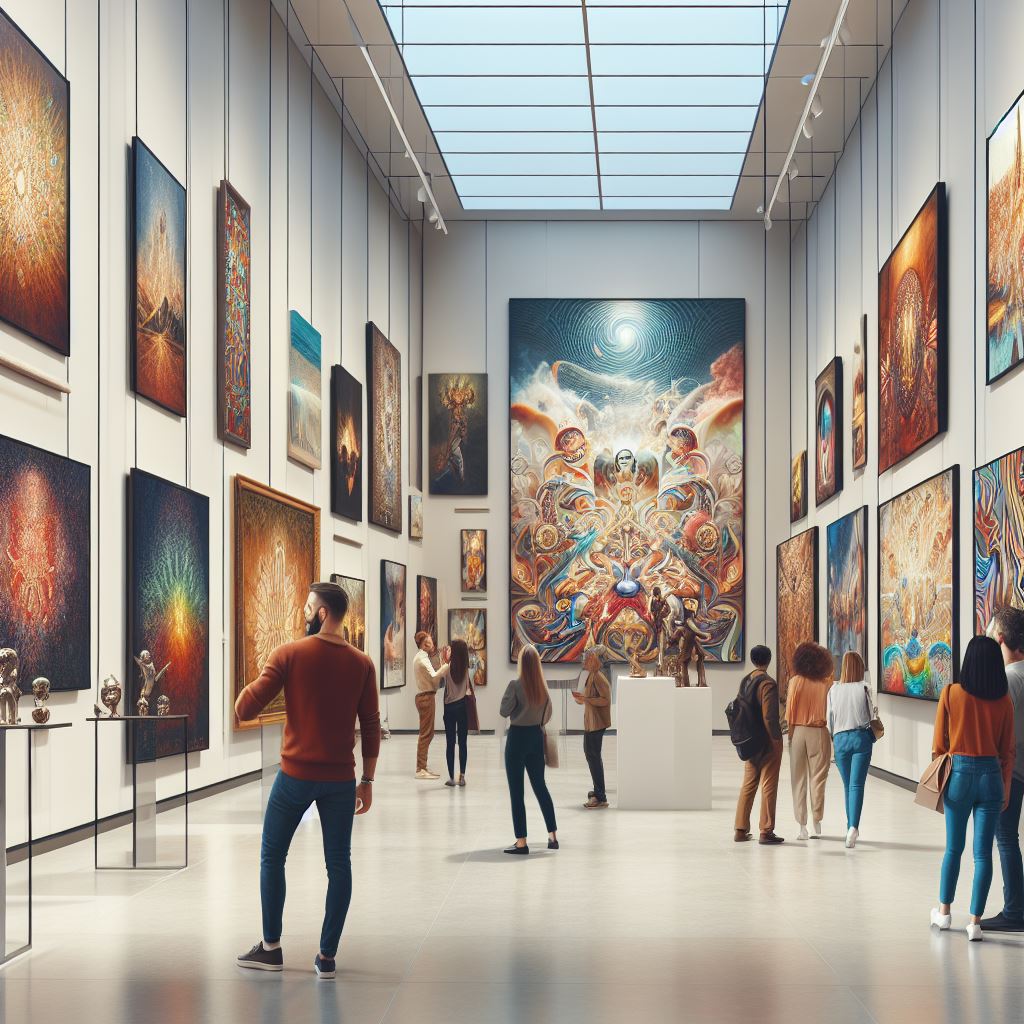Art is more than just an aesthetic pleasure; it’s an investment. A well-maintained art collection can even become a legacy, passed down through generations. However, like any precious asset, it requires careful preservation.
This blog will guide you through the essential steps of art preservation, ensuring your treasured pieces remain in pristine condition for years to come. Whether you’re an art aficionado or a novice collector, understanding the art of preservation is crucial. From handling techniques to environmental considerations, we delve deep into all aspects of art care.
Here’s your comprehensive guide to preserving your art collection. So, buckle up, and let’s embark on this journey of artistic preservation together.
Understanding Art Preservation

Art preservation is a delicate and meticulous process that requires a certain level of expertise and finesse. If you’re an art lover with a burgeoning collection, understanding the intricacies of preservation is crucial to maintaining the quality, beauty, and value of your prized artworks. Here, we provide you with expert tips to help in preserving your art collection.
Firstly, it’s important to remember that different types of art require different methods of preservation. For instance, oil paintings require different care than watercolor pieces or sculptures. Knowing what kind of artwork you have is the first step in understanding how best to preserve it.
Additionally, environmental factors such as light, temperature, and humidity can significantly affect the longevity of your artworks. Keeping them in a controlled environment that is not too hot, cold, humid, or dry is key. Direct sunlight should also be avoided as it can cause colors to fade.
Another crucial aspect of preserving your art collection is proper handling. When moving artworks, always handle them with clean hands free from oils and lotions that could potentially damage the piece. If the artwork is particularly large or heavy, don’t hesitate to seek professional help to avoid causing unintentional damage.
Lastly, regular cleaning and maintenance are also vital in preventing the build-up of dust, dirt, and grime. However, it’s crucial to remember that cleaning should always be done gently and with the appropriate materials to avoid scratching or damaging the artwork. Preserving your art collection may seem like a daunting task, but with these expert tips, you can ensure that your artworks remain as stunning and valuable as the day you first fell in love with them.
After all, as an art lover, there’s nothing more rewarding than being able to enjoy your collection for years to come.
You May Also Like: Mastering the Art of Enamel Painting: Tips for Achieving a Flawless Glossy Finish
Importance of Art Conservation
Art conservation plays an indispensable role in safeguarding the cultural, historical, and aesthetic significance of art pieces. As an art lover, preserving your art collection is a responsibility that extends beyond mere ownership. It involves adopting expert tips such as maintaining a suitable environment, avoiding direct sunlight, and regular cleaning, which can significantly prolong the lifespan of your collection.
The act of conservation not only preserves the physical integrity of the artwork but also ensures that future generations can appreciate and learn from these artistic treasures. You are not just an art collector; you are a preserver of history.
Basics of Art Preservation
Art preservation is a critical practice aimed at safeguarding the longevity and integrity of artworks, ensuring they withstand the test of time. The basics of art preservation involve creating a controlled environment that mitigates factors detrimental to artworks, such as fluctuations in temperature, humidity, and exposure to light.
Proper handling techniques are essential, emphasizing the use of gloves to prevent oils and contaminants from hands transferring onto delicate surfaces. Adequate storage is paramount, utilizing acid-free materials for framing, matting, and storage containers to prevent deterioration.
Regular maintenance, including dusting and careful cleaning using appropriate methods and materials, further contributes to the preservation of artworks. Art preservation not only maintains the aesthetic appeal of pieces but also protects their historical and cultural significance, allowing them to be appreciated by future generations.
Expert Tips for Art Lovers

As an art connoisseur, you undoubtedly appreciate the value of your collection. Preserving the beauty and integrity of your artworks is paramount to maintaining their value and enhancing your overall experience. Here are a few expert tips to help you in preserving your art collection.
First and foremost, handle your artwork with care. Always hold it by the edges and avoid touching the surface. Moisture and oils from your hands can damage the art over time.
Secondly, consider the location of your art. Extreme temperatures, humidity and direct sunlight can cause damage. Therefore, keep your artwork in a climate-controlled environment, away from windows.
Next, regular cleaning is essential. Dust and dirt can accumulate on your artwork, causing it to deteriorate. Use a soft brush to gently remove any dust.
Remember, never use cleaning products or water on your artwork as they can cause irreparable damage. Lastly, consider professional restoration for older pieces. If your artwork has already suffered some damage, a professional restorer can help to restore its original beauty.
They have the skills and knowledge to handle the delicate task without causing further damage. In conclusion, preserving your art collection involves a combination of careful handling, appropriate storage and regular maintenance. By following these expert tips, you can ensure your artwork continues to bring joy for many years to come.
1. Proper Storage Techniques
Preserving your art collection requires more than an appreciation for beauty; it necessitates an understanding of proper storage techniques. Art lovers, unite in the quest to keep our cherished pieces in prime condition! Expert tips range from managing humidity levels to preventing sun damage – all crucial when it comes to safeguarding your investment. Never underestimate the power of a well-placed frame or the importance of regular dusting.
Remember, the longevity of your collection is a testament to your curator skills. So, let’s keep those masterpieces looking their best for generations to come!
2. Appropriate Display Conditions
In every art lover’s journey, preserving their art collection is an essential task that cannot be overlooked. A well-maintained collection not only retains its beauty but also its value. The importance of appropriate display conditions cannot be overstated.
These conditions not only ensure the longevity of your treasured pieces but also enhance their aesthetic appeal. This blog section will delve into expert tips on how to create the ideal environment for your art collection, ensuring its preservation for generations to come. So let’s delve into the world of art preservation and discover how to keep your collection in pristine condition.
3. Consistent Art Maintenance
- Regular Inspection:
- Conduct routine checks to identify any signs of damage, wear, or environmental impact on artworks.
- Dust Control:
- Regularly dust artworks using soft brushes or lint-free cloths to prevent accumulation and potential damage.
- Handling Precautions:
- Always handle artworks with clean, dry hands or wear gloves to prevent oils and contaminants from transferring.
- Temperature and Humidity Control:
- Maintain a stable environment with controlled temperature and humidity levels to prevent warping, cracking, or deterioration.
- Lighting Considerations:
- Use appropriate lighting that minimizes UV exposure and controls intensity to prevent fading or discoloration.
- Secure Framing:
- Ensure artworks are securely framed using acid-free materials to protect against environmental elements and deterioration.
- Consistent Cleaning:
- Employ gentle cleaning methods suitable for the specific medium and surface of the artwork, addressing any stains or discoloration promptly.
- Documentation:
- Keep detailed records of artworks, including date of acquisition, condition reports, and any restoration work performed.
- Professional Assessments:
- Periodically seek professional assessments and conservation services to address any issues requiring expert attention.
- Emergency Preparedness:
- Have a plan in place for emergencies, including protection from natural disasters or accidents, and know whom to contact for restoration services.
- Educational Initiatives:
- Educate those involved in the care of artworks on proper maintenance practices and the importance of preservation.
- Adherence to Conservation Guidelines:
- Follow established conservation guidelines for handling, storing, and displaying artworks to maintain their long-term viability.
When to Call the Professionals
When Preserving Your Art Collection Calls for Expert Intervention The gratification that comes with owning an art collection is undeniably immense. However, the responsibility of preserving these valuable pieces can be quite daunting. There comes a time in every art lover’s life when cotton gloves, acid-free tissue paper, and controlled climate just don’t cut it anymore.
So, when does the bell toll for professional intervention? When your art starts to exhibit signs of deterioration such as discoloration, flaking, cracking, or mold spots, it is high time you call in the big guns. These symptoms often point to a deeper malaise that requires the precision and knowledge of a professional conservator. Additionally, if your collection includes older pieces or works made from delicate materials, expert care becomes a non-negotiable.
These pieces are often more susceptible to damage and the intricacies of their preservation might be beyond the scope of DIY solutions. Finally, if you’re planning to move, transport, or store your collection – it’s a wise move to enlist professional help. The risk of accidental damage during these processes is high and the consequences, heartbreaking.
In essence, preserving your art collection isn’t just about reactive care when damage occurs. It’s about proactive preservation, ensuring your pieces retain their value and integrity for years to come. So, don’t play doctor with your precious art.
When in doubt, always opt for an expert’s touch. After all, you wouldn’t want your art’s survival story to sound like a tragic game of Russian Roulette, would you?
Identifying Art Damages
Effortlessly preserving your art collection can prove to be a tricky task for even the most seasoned art lovers. The key lies in early identification of art damages. A keen eye for detail and understanding of common art detriments can go a long way in safeguarding your prized possessions.
From identifying light-induced fading to noticing subtle signs of mold infestation, our expert tips will equip you with the know-how to expertly maintain the vibrancy and integrity of your art collection. So, delve into this insightful guide, as we unravel the art of preserving art.
Choosing a Conservation Expert
Selecting a conservation expert is a crucial step in preserving your art collection. This professional can provide expert advice on maintaining the vibrancy and integrity of your pieces. Art lovers should prioritize a conservator’s experience, credentials, and specialty in their specific art medium.
A conservator who is adept at handling your art type can not only help preserve your collection’s aesthetic and monetary value, but also prolong its lifespan. It’s an investment in the longevity of your art, ensuring you can enjoy your collection for years to come.
Insurance and Documentation
Your art collection is not just a compilation of beautiful pieces, it’s a tangible representation of your taste, passion, and investment. As such, it’s crucial to take measures that ensure its longevity and value. So, let’s delve into the world of insurance and documentation, the unsung heroes of art collection preservation.
Like any valuable asset, your art collection needs to be insured. This is your financial safety net if your collection is damaged, stolen, or lost. While it may seem like a daunting task, finding the right policy is easier than you think.
It’s about understanding the value of your collection and finding an insurance plan that covers that amount. However, insurance is only half the battle. Alongside this, you need comprehensive documentation of your collection.
This includes keeping a record of purchase receipts, appraisal documents, authenticity certificates, and condition reports. A well-documented art collection not only helps in verifying ownership and value but can also make the claims process smoother in the event of damage or loss. Your art collection is a manifestation of your love for aesthetics and culture.
It deserves the best care possible to ensure its preservation. So, step into your role as a responsible art lover and equip your collection with the armor of insurance and the shield of documentation. Remember, preserving your art collection is not just about maintaining its physical state, but also about safeguarding its financial and historical value.
Insuring Your Art Collection
Safeguarding your cherished art collection is crucial, not only for its monetary value but also for its cultural and sentimental worth. Here, we share expert tips on preserving your art collection like an aficionado. From understanding the importance of appropriate insurance coverage, to mastering the art of environmental control and handling, we delve into the integral aspects of art preservation.
Tune in as we unravel the secrets of maintaining the vibrancy and value of your precious art pieces, helping to ensure their legacy for generations to come. After all, your art collection is more than just a possession – it’s a passion.
Keeping Updated Art Records
Maintaining an updated art record is integral to preserving your prized art collection. As an art lover, this might seem like a mundane task, but it significantly contributes to the longevity and value of your collection. Think of it as a health check-up for your art, where each piece’s condition, history, and appraisal are meticulously documented.
This proactive approach not only safeguards your collection but also enhances its appreciation over time. So, roll up your sleeves and delve into the world of art record keeping – your collection will thank you for it!
Frequently Asked Questions (FAQs)
What are some expert tips for preserving my art collection effectively?
First, avoid direct sunlight exposure as it can cause fading or discoloration. Keep your artwork in a stable environment with controlled temperature and humidity. Regularly dust your artwork with a soft cloth. Avoid touching the artwork directly with your hands as oils can damage it. Lastly, for expensive or antique pieces, consider getting professional help for cleaning and preservation.
How can art lovers ensure the longevity of their art collection?
Regular maintenance is key to preserving an art collection. This includes cleaning, framing, and conserving artworks properly. It is also essential to store or display artwork in the right environment, ideally away from direct sunlight, high humidity, or extreme temperatures.
Are there any specific materials or tools recommended by experts for art preservation?
Acid-free materials are highly recommended for art preservation. This includes acid-free mats for framing, acid-free boxes for storage, and UV-filtering glass for display. Additionally, using white cotton gloves while handling artwork can prevent oils and dirt from damaging the piece.
What are some of the common mistakes art lovers make when preserving their collection?
Common mistakes include exposing artwork to direct sunlight, not controlling temperature and humidity levels, and using harsh cleaning solutions. Another mistake is not seeking professional help when necessary, especially for valuable or fragile pieces.
How often should I check and maintain my art collection for preservation?
Regular checks every six months can help identify any issues early. However, maintenance frequency can also depend on the type of artwork, its age, and the environment in which it’s stored or displayed. Always seek expert advice if you’re unsure.
Can I insure my art collection, and how does it help in preservation?
Yes, you can and should insure your art collection. Insurance not only provides financial protection in case of damage or loss but also often requires you to maintain your artwork properly, thus indirectly helping in its preservation.
Conclusion
Preserving your precious art collection is both an art and a science. It’s not just about hanging your pieces on the wall or placing them on a shelf. It’s about understanding the materials, the environment, and the little nuances that can make a big difference. It’s about being a bit of a detective, a scientist, and an art lover, all rolled into one. So, get your white gloves ready, adjust your indoor humidity, and always remember – the preservation of art is the preservation of beauty, history, and culture. So, take care of your art collection, because it’s not just art, it’s a part of who you are.

Matthew C. Moore is a passionate artist with an insatiable interest in color and painting. His creative journey takes form on his blogsite, Painthubs, where he shares his love for art with the world. Through his captivating content, Matthew seeks to inspire and connect with fellow art enthusiasts, showcasing the power of colors and the beauty that can be brought to life through painting.
